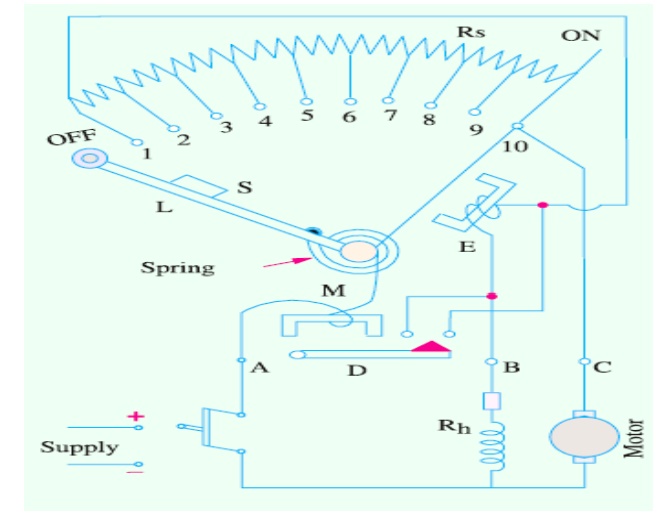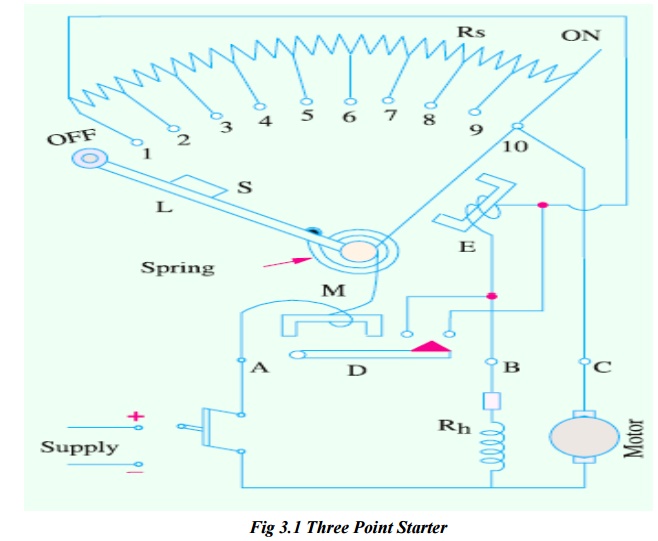Chapter: Electrical Drives & Control : Starting Methods
Three Point Starter

THREE POINT STARTER
The component used and the internal wiring for a three point starter are shown.
Three terminals L, Z, and A are available in the starter circuit for connecting to the motor.
The starting resistance Rs provided with tapping and each tapping is connected to a brass stud. The handle of the starter, H is fixed in such a way to move over the brass studs.
Two protective devices namely over load release and no voltage coil provided to protect the motor during over and during failure of supply.
To start the motor, the starter handle, full resistance is connected in series with the armature and the armature circuit of the motor is closed through the starting resistance and over load release coil.
Field circuit of motor is also closed through the no voltage coil.
Then the handle is moved over the studs against the spring force offered by a spring Sp mounted on the handle.
As handle movers, the staring resistance is gradually cut out from the motor circuit.
A soft iron pieces is attached to the handle.
The no voltage coil, NVC consists of an electro magnet energized by the field current.
When the handle reaches the ON position, the NVC attracts the soft iron piece and holds the handle firmly.
Whenever there is a failure of supply, the NVC de-energies and releases the handle.
The handle position returns to off position due to the spring tension.
If this arrangement is provided, then when the power supply is restored, the armature alone will be connected to the supply and the current through the armature will be high and it will damage the armature winding.
Thus the armature is protected against failure of supply by NVC.
The over load release also has an electromagnet and the line current energizes it.
When the motor is overloaded, the iron strip P is attracted to the contacts (c and c‟) due to the electromagnetic force produced by the overload release coil and the contacts c and c‟ are bridged.
Thus in this case NVC is de-energized and the handle comes to off position thus the motor is protected against overloading.
We can see that under normal running of the motor the starting resistance when the handle touches the first stud it also touches the brass arc through which full voltage is supplied to the field coil.
Disadvantage
This three point starter is not suitable when we have to control the speed of the motor by connecting a variable resistance in series with the field winding.
When the speed, the no voltage coil will be de-energized and handle will return the off position.
Due to this disadvantage, four point starters is widely used for starting shunt and compound motors.

Related Topics